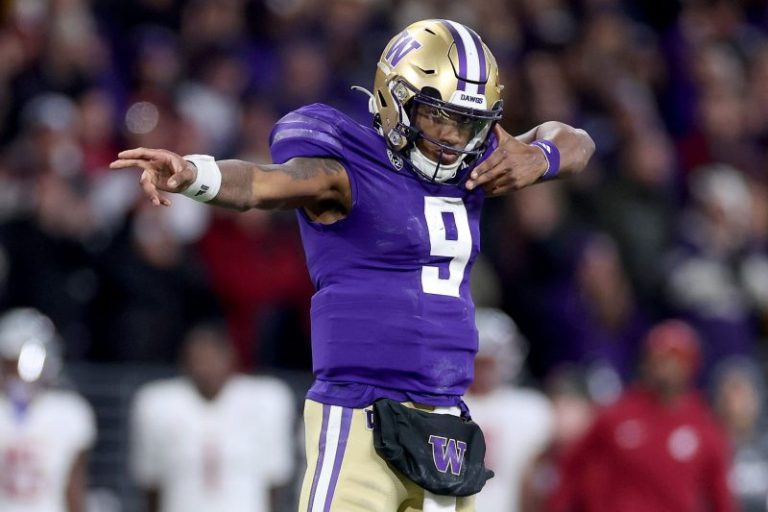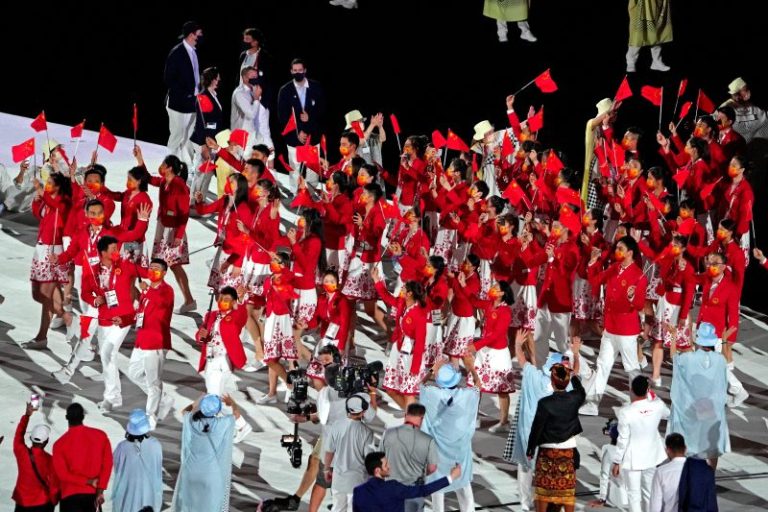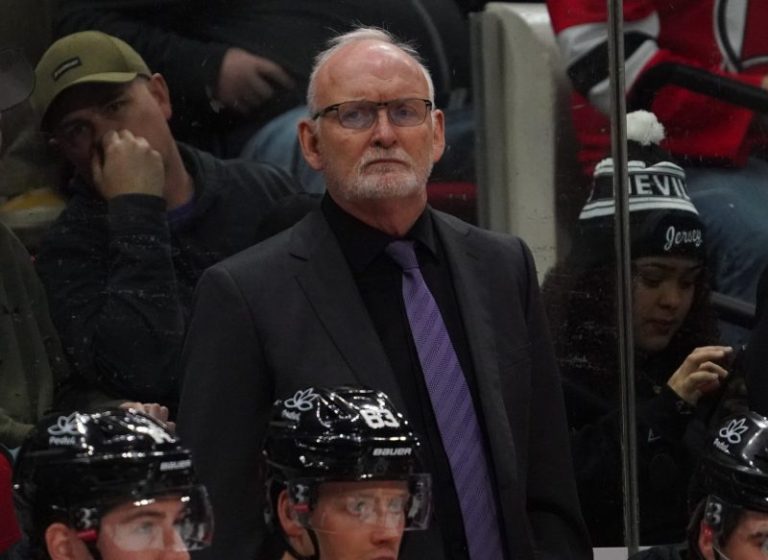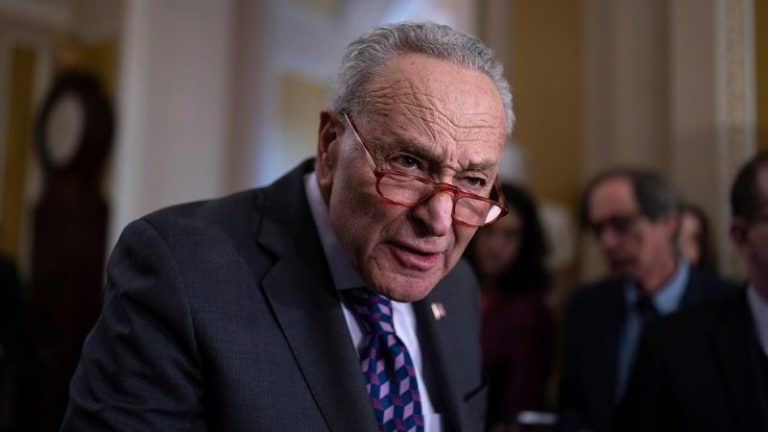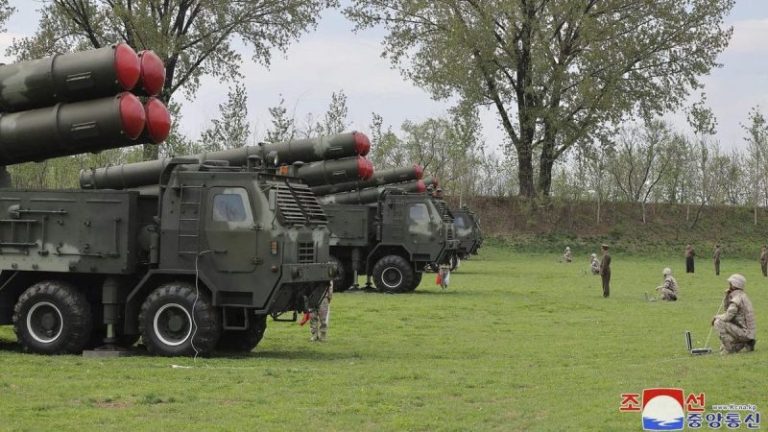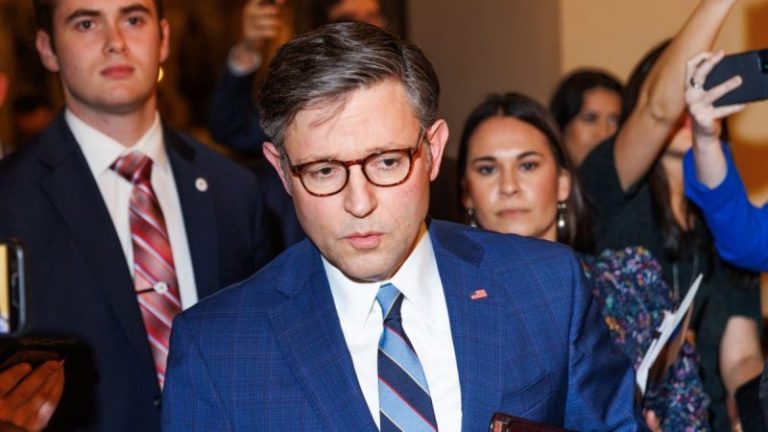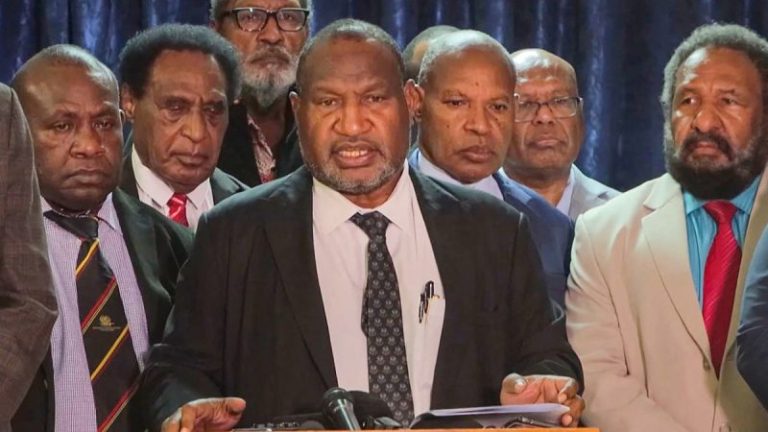NFL draft week has arrived at last, Round 1 set to open Thursday night in downtown Detroit. Thirteen prospects will be in attendance, including the three quarterbacks widely projected to be the top three selections of this year’s ‘Player Selection Meeting’ – former Southern California star Caleb Williams expected to hear his name called first by Commissioner Roger Goodell.
Beyond that, some drama is certainly expected – notably the possibility of a major trade for one of the passers significantly shaking up the first round. Should be an eventful weekend as the league’s capstone offseason event unfolds.
Here’s my final projection for the initial 32 picks:
1. Chicago Bears (from Carolina Panthers): QB Caleb Williams, USC
Any slim notion that the 2022 Heisman Trophy winner might be available to other teams evaporated with Justin Fields’ trade to Pittsburgh. Williams has drawn (unfair) comparisons to Patrick Mahomes, Aaron Rodgers and peak Russell Wilson – which certainly means he’ll be expected to settle a position that’s usually been in flux in the Windy City for the past century. A multi-threat weapon who can make throws with the highest level of difficulty, Williams should essentially complete Chicago’s rebuild.
NFL DRAFT HUB: Latest NFL Draft mock drafts, news, live picks, grades and analysis.
2. Washington Commanders: QB Jayden Daniels, LSU
Some late-developing smoke over the past week regarding his interest (disinterest?) in playing just outside the nation’s capital – though that’s eminently more likely than Daniels’ apparent mutual affection for the Raiders. No quarterback in this draft possesses the 2023 Heisman winner’s elite combination of running and passing ability, Daniels capable of a backbreaking bolt to the end zone via land or air. Given the multiple ways he can stress a defense – not to mention the state of Washington’s offensive line – seems logical to go for the highly mobile passer who can increasingly rely on his passing prowess as his blocking improves.
3. New England Patriots: QB Drake Maye, North Carolina
Though not a certainty Daniels goes second, this feels like the draft’s first legit pivot point – whether it’s whom the Pats pick, quarterback or not, or if they potentially trade out of this spot for what would certainly be a significant bounty of assets. Yet a team that has painfully witnessed Buffalo’s Josh Allen take its divisional throne might be too enticed by Maye, who has a somewhat comparable skill set – including the big arm that can certainly be an asset in the AFC East’s weather conditions – and size (6-4, 223). Maye slipped a bit in 2023 after being the ACC Player of the Year in 2022 but also didn’t have the same weapons at his disposal. If he does need a season – or maybe less – to dial into the NFL, New England does have veteran QB Jacoby Brissett as a stopgap.
4. Arizona Cardinals: WR Marvin Harrison Jr., Ohio State
Rampant speculation that a trade could happen here given the Cards aren’t desperate for a franchise quarterback like so many other teams and have a general manager (Monti Ossenfort) who’s proven more than willing to execute a draft night blockbuster. Yet while Arizona has numerous holes, the club also already owns six of this draft’s top 90 selections – and, at some point, you can’t turn down premium players who fill major needs. Harrison would certainly do that for a club that clearly lacks anything resembling a WR1 following the free agent departure of Hollywood Brown.
5. Minnesota Vikings [PROJECTED TRADE with Los Angeles Chargers]: QB J.J. McCarthy, Michigan
The Vikes have been expected to deal up for a quarterback to replace departed starter Kirk Cousin since acquiring a second first-round pick from the Texans last month. And a move down makes sense for the Bolts, who are resetting from a personnel and cultural standpoint under a regime led by new HC Jim Harbaugh. Ironically, this scenario has Minnesota obtaining the quarterback who led Harbaugh’s Michigan Wolverines to two College Football Playoff appearances and last season’s national championship. McCarthy displayed ample physical tools over 28 college starts and has renowned intangibles. However Michigan’s dominance limited his exposure to many high-leverage situations, leaving questions about his ability to carry an NFL team. Yet the Vikings could be an ideal landing spot given their roster – notably All-Pro WR Justin Jefferson – HC Kevin O’Connell and quarterbacks coach Josh McCown, both former NFL passers. Veteran QB Sam Darnold is also on hand in 2024, meaning a young passer like McCarthy wouldn’t have to play immediately.
6. New York Giants: WR Malik Nabers, LSU
Daniels’ primary target the past two seasons in Baton Rouge, Nabers really blossomed during a 2023 All-American campaign, when he caught 89 balls for 1,569 yards and 14 TDs. And if the Giants are compelled to move forward with QB Daniel Jones, which will almost certainly be the case regardless in 2024, giving him a bona fide weapon is obviously the sensible move – both from a pure football perspective, not to mention the opportunity to advance Jones’ development and/or make him a more attractive trade prospect in 2025 if Big Blue moves on then instead.
7. Tennessee Titans: OT Joe Alt, Notre Dame
The massive (6-9, 321), unanimous 2023 All-American – and son of legendary Chiefs lineman John Alt – is widely regarded as the best blocker in this draft and a plug-and-play blind side tackle for an offense that desperately needs one. And given the Titans addressed the offensive skill positions in free agency (WR Calvin Ridley, RB Tony Pollard), may as well continue leveling up the line after they made LG Peter Skoronski their first-round pick in 2023. So let’s drop Alt in next to him in a bid to continue improving the protection around second-year QB Will Levis. And don’t forget, new HC Brian Callahan hired his father, legendary O-line coach Bill Callahan, to remediate a front five that surrendered 64 sacks in 2023, tied for most in the AFC.
8. Atlanta Falcons: DE Laiatu Latu, UCLA
While it’s almost universally expected they’ll opt for defense in Round 1, the Falcons are another squad in a unique spot – one likely to be coveted by others yet allows Atlanta to move down and accrue picks while still getting a top defender. However Latu could be a compelling option. The Pac-12’s defensive player of the year in 2023 – when he also earned the Lombardi Award and Ted Hendricks Award for being the country’s best collegiate defensive end while posting an FBS-best 1.8 tackles for loss per game – Latu racked up 35 TFLs, 23½ sacks, five forced fumbles and a pair of interceptions in two seasons with the Bruins. A neck injury suffered while he attended the University of Washington temporarily relegated him to medical retirement, but Latu said at the scouting combine that his current medical reports suggest he’s no longer at high risk. The Falcons’ doctors would, of course, have to agree, but strong case they’d enlist this year’s most advanced, productive and versatile pass rusher if they do. Atlanta would also have unique insight given new DC Jimmy Lake was Latu’s head coach at UW.
9. Bears: WR Rome Odunze, Washington
Trading down could be temping for Chicago, which has a draft-low four selections, as well. Yet the Bears, who have been busily building a proper supporting cast for Williams, are also dangerously thin at wideout behind DJ Moore and Keenan Allen, who will be 32 by Week 1 and is only under contract for this season. Spectacular as Harrison and Nabers are, plenty of proponents for Odunze, an All-American last year and All-Pac-12 member the past two. The 6-3, 212-pounder has a sterling off-field reputation plus the ball skills and production (92 catches, for 1,640 yards, 13 TDs in 2023) to be a co-WR1 with Moore in 2025 and beyond.
10. New York Jets: TE Brock Bowers, Georgia
Yet another team with a fascinating array of options. GM Joe Douglas, who knows he and HC Robert Saleh are on the hot seat entering this season, wouldn’t have far to go if he wants to get one of this draft’s elite wideouts. Despite an offensive line reinforced through free agency, this would also be a great spot to further fortify the blocking in front of QB Aaron Rodgers. A trade back could still net an impact player and, perhaps, the second-round pick the NYJ don’t currently possess. But sticking and picking could bring a threat of Bowers’ estimable caliber. Despite being limited by an ankle injury for a good chunk of the 2023 season, Bowers, the only two-time Mackey Award winner ever, had 26 TD catches during his three-year college career and averaged nearly 60 grabs for 850 yards as the rare player at his position who could dominate a game offensively – sometimes as a ball carrier. He’d be quite a run-after-catch threat between the hashes with WRs Garrett Wilson and Mike Williams operating outside and RB Breece Hall holding defenders in the box.
11. Chargers [PROJECTED TRADE with Vikings]: OL Taliese Fuaga, Oregon State
Harbaugh gets what he apparently covets here – an aggressive lineman who exemplifies the Bolts’ new philosophy. A right tackle for the Beavers, Fuaga is excellent in pass protection and especially nasty as a run blocker. He’ll be the first Round 1 O-lineman in Oregon State’s history and can probably play anywhere up front aside from center – but would settle in nicely to his familiar spot on QB Justin Herbert’s front side.
12. Denver Broncos: QB Bo Nix, Oregon
It might seem like a steep price for a passer who’s somewhat unremarkable physically, and maybe the Broncos – this is their only pick in the top 75 – can trade back and still get Nix. They were only too willing to eat Russell Wilson’s high-calorie contract, however Jarrett Stidham and Ben DiNucci seem like a crash diet. Nix has the mobility, accuracy – yes, some of his record 77.5% completion rate in 2023 was juiced by the Ducks’ offense – and quick decision-making HC Sean Payton values, plus a nose for the goal line (38 rushing TDs in five college seasons). And with an FBS-record 61 starts under his belt, rookie passers don’t come much more ready-made.
13. Las Vegas Raiders: DE/OLB Dallas Turner, Alabama
Co-Defensive Player of the Year in the SEC last season while racking up 10 sacks, he has a case as this draft’s premier defensive prospect – one who can bend around blockers and maybe change any D’s complexion. Turner would add more juice to the defense of new HC Antonio Pierce, a former linebacker himself. Lining up opposite DE Maxx Crosby and taking advantage of new DT Christian Wilkins, Turner could be a good solution to the Silver and Black’s prime challenge: neutralizing Kansas City’s Mahomes.
14. New Orleans Saints: OT Olumuyiwa Fashanu, Penn State
Given the performance, or lack thereof, thus far by former first-round LT Trevor Penning plus the knee issues and cost associated with RT Ryan Ramczyk, the Nittany Lions’ 2023 All-American makes too much sense – particularly given the amount of abuse (physical and otherwise) taken by QB Derek Carr in 2023.
15. Indianapolis Colts: CB Quinyon Mitchell, Toledo
He’s got size (6-0, 195), blazing speed (4.33 40 time) and ball skills, two of his six interceptions over the past two seasons turned into pick-sixes. And Indy needs cover help outside, particularly in a division where enemy QBs C.J. Stroud and Trevor Lawrence are bound to put the ball in the air frequently.
16. Seattle Seahawks: DT Byron Murphy II, Texas
New HC Mike Macdonald made his bones as a defensive coach and joins a franchise that watched the Rams’ Aaron Donald wreck shop for a decade. The NFL is also increasingly reliant on players who can disrupt quarterbacks up the middle – something Murphy can do effectively and likely much more so if teamed alongside veteran DT Leonard Williams.
17. Jacksonville Jaguars: CB Terrion Arnold, Alabama
The first-team All-American features confidence, production and toughness. And the Jags live in a world where they better be ready to defend the AFC South champion Texans and a suite of playmakers that now includes WR Stefon Diggs at Stroud’s disposal.
18. Cincinnati Bengals: OL Troy Fautanu, Washington
This team usually drafts ahead of its needs, yet offensive line has been a perennial one since QB Joe Burrow came to town in 2020. An All-Pac-12 performer with sweet feet, Fautanu has All-Pro ability and the versatility to thrive at tackle or guard.
19. Los Angeles Rams: DE Jared Verse, Florida State
20. Pittsburgh Steelers: WR Brian Thomas Jr., LSU
The 6-3, 209-pounder put down a 4.33 40 at the combine in the wake of a season when he had 1,177 yards on 68 catches – a quarter of those receptions resulting in TDs. And with Diontae Johnson now in Carolina and newly signed free agents Van Jefferson and Quez Watkins currently the best options at WR2, an upgrade opposite George Pickens – and he has consistency issues himself – seems like a sizable priority.
21. Miami Dolphins: OL Graham Barton, Duke
A left tackle for the Blue Devils, the two-time All-ACC selection is likely headed inside in the NFL due to his relatively short arms. And the Fins could use help there after losing Connor Williams, apparently, and Robert Hunt during free agency.
22. Philadelphia Eagles: OT JC Latham, Alabama
His defensive needs aside, if a blocker with this much potential is available, could Philly EVP/GM Howie Roseman really help himself? The 6-6, 342-pound Latham has experience at guard, and there’s a hole there with Cam Jurgens sliding into the center spot vacated by retired Jason Kelce. But Latham’s long-term home is right tackle, and with All-Pro Lane Johnson turning 34 next month and out of guaranteed money, he could be following Kelce out the door in the near future.
23. Chargers [PROJECTED TRADE with Cleveland Browns via Houston Texans and Vikings]: WR Ladd McConkey, Georgia
The Bolts’ trade with Minnesota allows them to address two glaring needs in Round 1 – offensive line and, here, receiver following the departures of starters Keenan Allen and Mike Williams. McConkey would provide Herbert with a reliable option either outside or from the slot, where he could maybe best complement 2023 first-rounder Quentin Johnston, who struggled as a rookie.
24. Dallas Cowboys: OL Jackson Powers-Johnson, Oregon
Plenty of needs for a team that has been restricted from doing much with free agents due to its bloated salary cap. The 2023 Rimington Trophy winner as the country’s best college center, ‘JPJ’ – who excels as a run and pass blocker – could replace departed C Tyler Biadasz or slide one spot to the left and allow LG Tyler Smith to kick out to the longtime post vacated by LT Tyron Smith. Also worth noting, RG Zack Martin is out of contract in 2025.
25. Green Bay Packers: OT Tyler Guyton, Oklahoma
Well, we know GM Brian Gutekunst won’t take a receiver at this spot. Guyton, a former tight end incidentally, would bring high-end potential and flexibility to a line that’s lost LT David Bakhtiari and G Jon Runyan Jr. Guyton played some left tackle for the Sooners but was mostly on the right side. That could provide options in Green Bay, where incumbent OT Zach Tom has also lined up on either end of the line.
26. Tampa Bay Buccaneers: DE Chop Robinson, Penn State
His eye-popping athleticism – the 6-3, 254-pounder ran a sub-4.5 40 at the combine – doesn’t necessarily align with his production, which included 9½ sacks and 17½ TFLs in two seasons with the Nittany Lions. But he could be a real asset to a defense that was reliant on the blitz in 2023 and just lost OLB Shaq Barrett.
27. Cardinals (from Texans): DL Darius Robinson, Missouri
The 6-5, 285-pound All-SEC selection has the size and athleticism to play inside or out while thriving against the run or pass – all traits a defense that’s weak up front and allowed the second-most points in the league in 2023 could badly use.
28. Buffalo Bills: WR Adonai Mitchell, Texas
After divorcing themselves from Diggs and Gabe Davis this offseason, the Bills clearly need to replenish the wideout position beyond free-agent gadget signing Curtis Samuel. Mitchell has Velcro hands, postseason bona fides, size (6-2, 205) and exceptional speed (4.34 40 time) – a combo that should dovetail with Josh Allen, who likes to go deep but can benefit from a larger catch radius on intermediate throws. A Georgia transfer, Mitchell found the end zone 11 times during his only season with the Longhorns.
29. Raiders [PROJECTED TRADE with Detroit Lions]: QB Michael Penix Jr., Washington
A strong pro day certainly didn’t damage his stock. If not for his history of knee and shoulder problems, which predates Penix’s time with the Huskies, he’d probably be projected as a top-10 selection. So trading back into the first round to get him could be a real steal for Las Vegas, while also allowing the Lions – GM Brad Holmes has indicated he’s committed to strengthening the roster without necessarily making a bold move for the reigning NFC North champs – to build capital, likely adding a second- and third-round pick in this scenario. Penix’s past two seasons with the Huskies were sublime (67 TD passes, 19 INTs). The Heisman runner-up to Daniels last season, his performance against Texas in the CFP (430 yards, 2 TDs passing) was an all-timer, the southpaw lasering the ball over the field. His maturity and experiences are also plusses.
30. Baltimore Ravens: OT Amarius Mims, Georgia
A right tackle who already knows OC Todd Monken’s playbook, Mims’ 87-inch wingspan and 6-8, 340-pound frame help him block out the sun. He could start straight away following the trade of previous RT Morgan Moses to the Jets.
31. San Francisco 49ers: DT Johnny Newton, Illinois
The Big Ten’s reigning Defensive Player of the Year, who’s 6-2 and 304 pounds, is strong, tough, twitchy and certainly disruptive enough to upgrade and deepen the Niners’ precious D-line, which took some hits in free agency.
32. Kansas City Chiefs: OT Jordan Morgan, Arizona
It would be fun to give the champs a toy like Texas WR Xavier Worthy, who set the combine record with a 4.21 40-yard dash. But a gaping hole seemingly remains on Mahomes’ blind side. Too big a need to ignore unless LT Donovan Smith re-signs or HC Andy Reid and GM Brett Veach have a yet-to-be revealed plan that makes more sense than gambling on 2023 third-rounder Wanya Morris. Barring that, Morgan could be the answer – and a significant improvement – particularly in pass pro.
***
Follow USA TODAY Sports’ Nate Davis on X, formerly Twitter @ByNateDavis.

